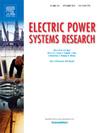Detection and classification of faults in renewable energy penetrated stand alone microgrids using SVM and DWT techniques
IF 3.3
3区 工程技术
Q2 ENGINEERING, ELECTRICAL & ELECTRONIC
引用次数: 0
Abstract
This paper deals with the problems of fast and accurate detection of any type of faults as well as their bus location those may occur in a renewable energy sources (RESs) penetrated standalone microgrid (MG) system. The developed technique relies only on the current signal measured from every generator bus of standalone MG. The Discrete Wavelet transform (DWT) based decomposition upto 9th level of the current signal is performed to detect the fault. The detailed and approximate coefficients from the DWT are utilized to develop the kurtosis patterns. These kurtosis patterns are analyzed to detect the presence of faults in the MG. The types of faults are classified using Support Vector Machine (SVM) along with principal component analysis (PCA) based dimensionality reduction technique. The proposed approach remains independent of fault bus location and partial fault impedance as well. The fault detection scheme is made intelligent enough so that it can distinguish the variation in renewable generations and the faulty condition. The PSCAD software is used to simulate various types of fault in different buses of MG. The DWT decomposition and PCA enabled SVM of current data are utilized for detection and classification of faults as illustrated in the result section. The evidence from the obtained accuracy in detection of fault as well as its type shows the efficacy of the proposed method. Besides, the time of execution in detecting and classifying the faults shows the fastness of the proposed algorithm.
求助全文
约1分钟内获得全文
求助全文
来源期刊

Electric Power Systems Research
工程技术-工程:电子与电气
CiteScore
7.50
自引率
17.90%
发文量
963
审稿时长
3.8 months
期刊介绍:
Electric Power Systems Research is an international medium for the publication of original papers concerned with the generation, transmission, distribution and utilization of electrical energy. The journal aims at presenting important results of work in this field, whether in the form of applied research, development of new procedures or components, orginal application of existing knowledge or new designapproaches. The scope of Electric Power Systems Research is broad, encompassing all aspects of electric power systems. The following list of topics is not intended to be exhaustive, but rather to indicate topics that fall within the journal purview.
• Generation techniques ranging from advances in conventional electromechanical methods, through nuclear power generation, to renewable energy generation.
• Transmission, spanning the broad area from UHV (ac and dc) to network operation and protection, line routing and design.
• Substation work: equipment design, protection and control systems.
• Distribution techniques, equipment development, and smart grids.
• The utilization area from energy efficiency to distributed load levelling techniques.
• Systems studies including control techniques, planning, optimization methods, stability, security assessment and insulation coordination.
 求助内容:
求助内容: 应助结果提醒方式:
应助结果提醒方式:


